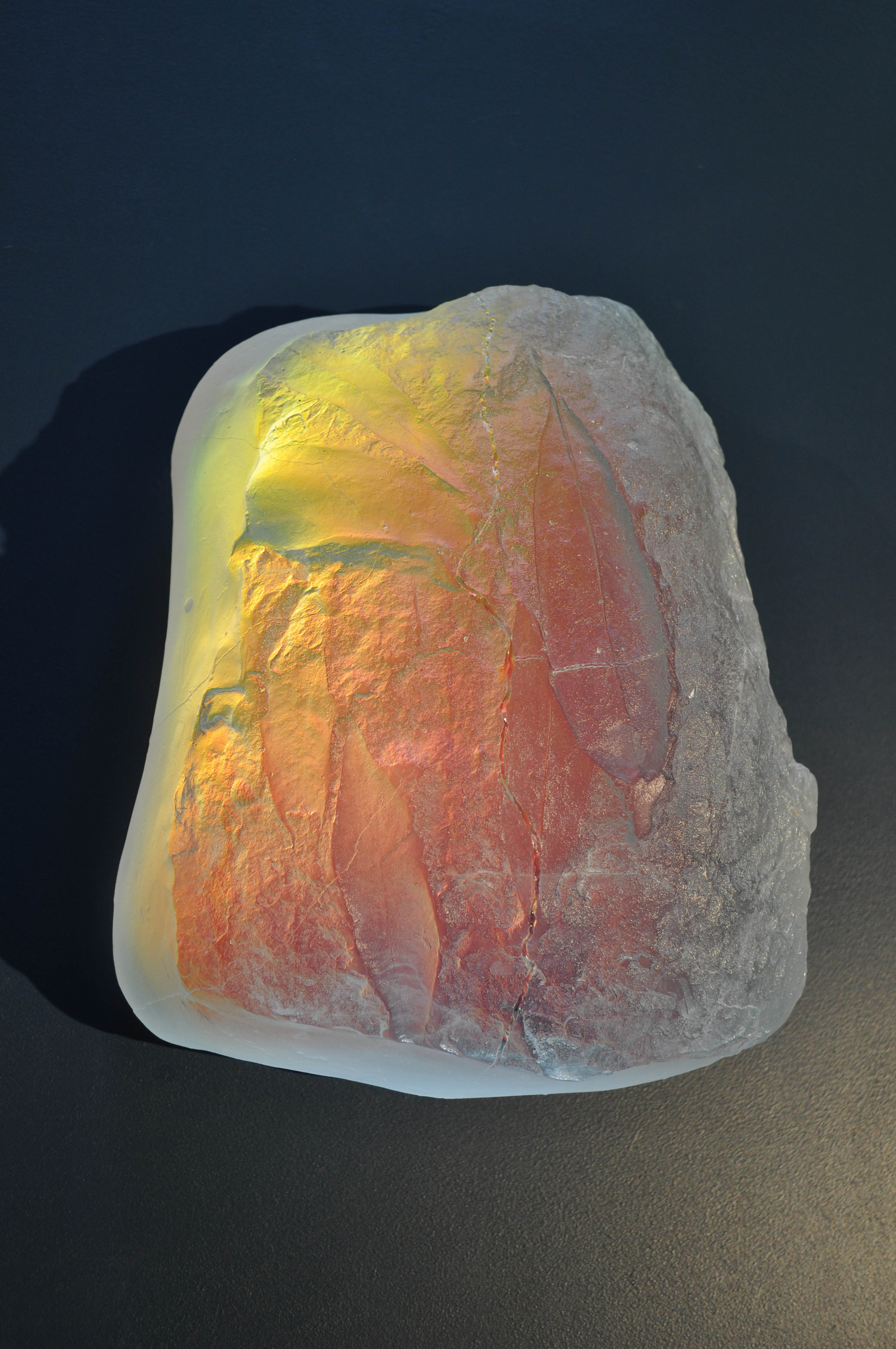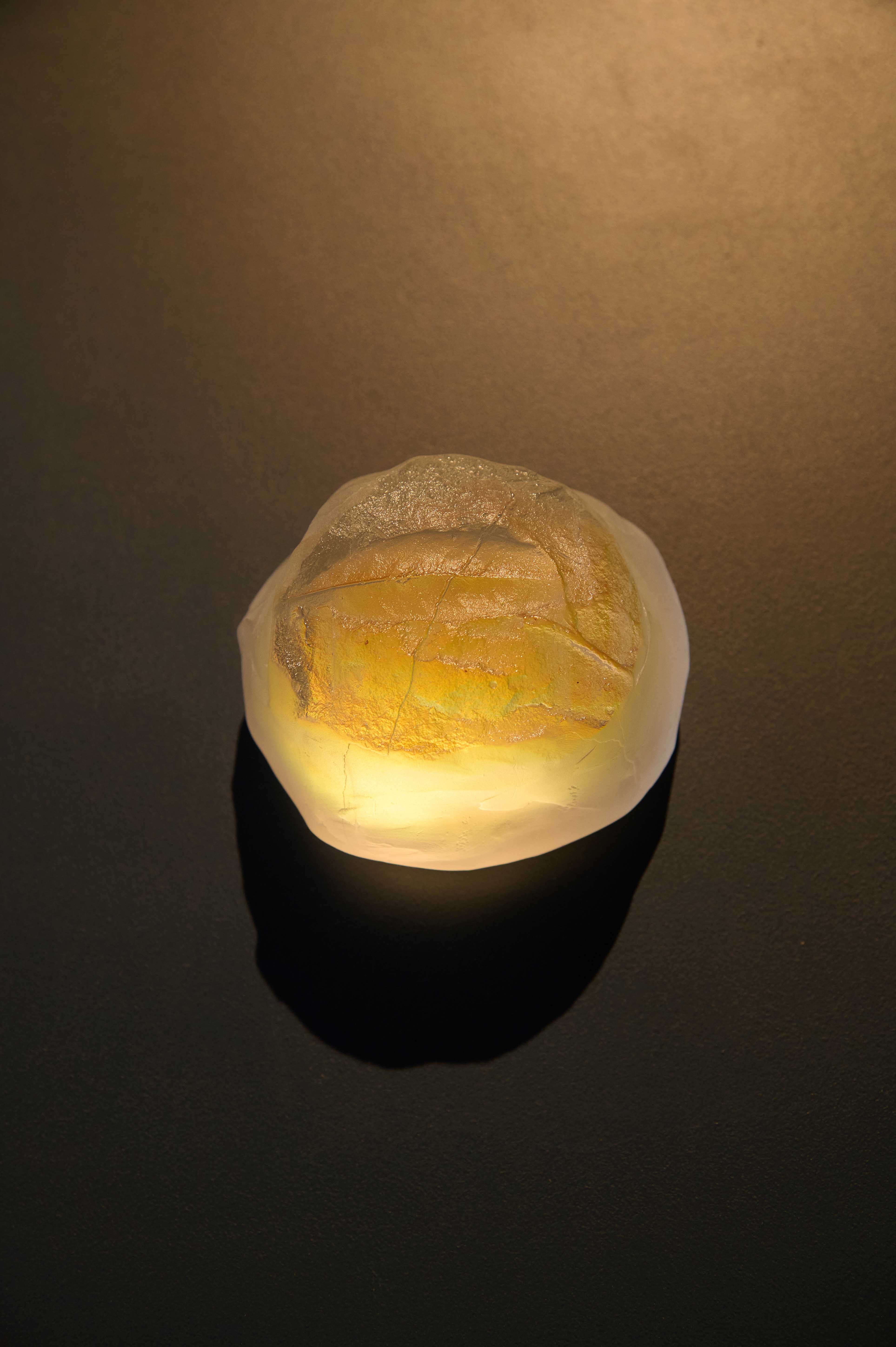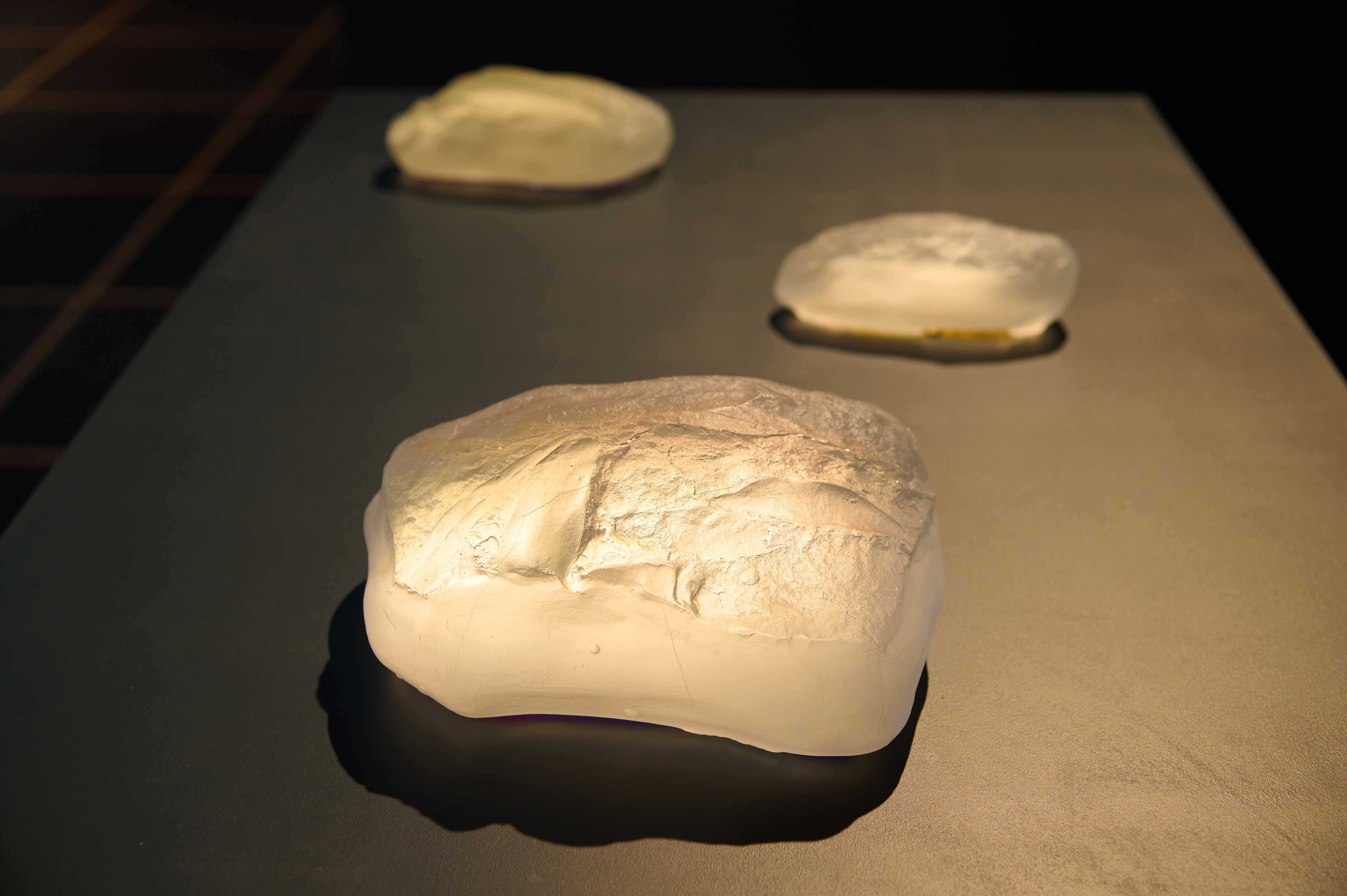stonewareplant2023
Pâte de verre, sandblasted glass, dichroic glass
Stones rounded by time bear the imprint of plant fossils dating from the Eocene (-56 -33.9 million years). These imprints were taken from plant sandstones preserved at the Natural History Museum in Angers. The plants fossilized in the stone are visible down to the smallest detail (leaf veins, edge teeth, etc.). Paleoclimatologists use these fossils to study and define the climate of those distant times. Leaf shape is studied, and there is a correlation between morphology and climate. Based on morphotypes, 11 climatic parameters can be established (temperature, duration of plant growth, rainfall, etc.). In certain places, colored flashes appear in the glass, like light from ancient times, a precious testimony to understanding the present.



